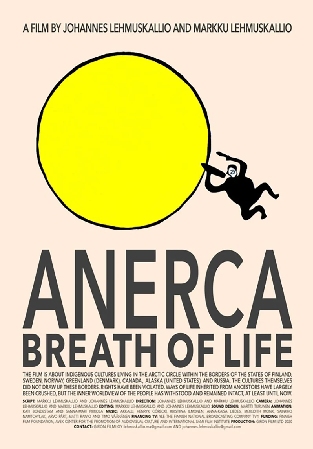
Anerca, Breath of Life 2020
Distributed by Grasshopper Film, 12 East 32nd St., 4th Floor, New York, NY 10016
Produced by Markku Lehmuskallio and Johannes Lehmuskallio
Directed by Markku Lehmuskallio and Johannes Lehmuskallio
Streaming, 86 mins
Middle School - General Adult
Anthropology; Indigenous Peoples
Date Entered: 06/15/2022
Reviewed by Monique Threatt, Indiana University, Herman B Wells Library, Bloomington, INIn this feature-length documentary, Finnish filmmakers Markku Lehmuskallio and his son, Johannes, cast a light on the traditions of numerous indigenous cultures in the Artic Circle. The film seeks to portray obscure cultures and traditions while also acknowledging the difficulties faced by people who wish to live the way their ancestors did eons ago. The film mixes several approaches. It intertwines oral history, partial narration, and unveils a combination of artistic expression, language, music, and survival skills as represented by those living “within the borders of Finland, Sweden, Norway, Greenland (Denmark), Canada, Alaska, and Russia.”
One of the pros of the film is that it serves as an anthropological resource to compliment academic and/or public exhibits in which to provide a lens into lesser known global communities and traditions. However, outside of those spheres, the film struggles to keep viewers engaged. Transitions, while artistic, are sudden and could leave viewers confused as to what is happening. The film superficially explains some of the historical customs and cultures, but, in this reviewer’s opinion, leaves out a significant amount of context.
In hindsight, it appears that one of the goals of the filmmakers is to connect the souls of the people who, although may have migrated to different parts of the Artic, intuitively preserve primal customs deeply ingrained in ancestral tradition. However, interweaving archival footage within non-linear story lines can, at time, make for a confusing and overwhelming plot to identify exactly which indigenous group is being represented in the film. Much of the film is delivered in an abstract and ethereal manner which invokes a spiritual essence of by-gone traditions, and it is calming to feel a part of one's culture. However, due to less-than-desirable editing, this 86-minute documentary tries to pack in too many cultures leading to a sense of an uncompromising banality.
In closing, the film is recommended with reservations as it is a film that has great potential to serve those studying anthropology, and indigenous cultures. However, this reviewer cautions patrons and students to supplement the film with printed and/or other documentaries to gain further knowledge of indigenous people in the Artic circle.
Published and licensed under the Creative Commons Attribution 4.0 license. Anyone can use these reviews, so long as they comply with the terms of the license.